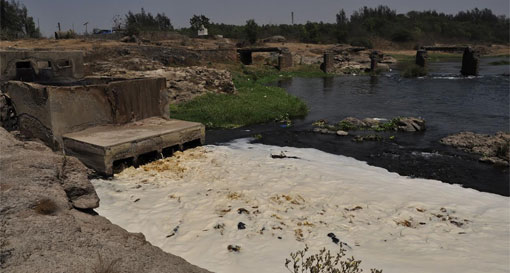The 19th CSE Media Fellowships 2014: Industrial hotspots, environmental pollution and thereafter

In 2010, the Indian government had declared 43 industrial clusters across the country as ‘critically polluted’.
This list was based on a Comprehensive Environmental Pollution Index (CEPI) created by the Central Pollution Control Board (CPCB). In 2013, the Union ministry of environment and forests (MoEF) imposed a moratorium banning new industries in eight industrial clusters, after a survey showed very high pollution levels in these areas.
While pollution from industries is a well-documented and discussed phenomenon in India, the country has the potential to reinvent growth without pollution. And industry has a unique responsibility to deliver that growth in a way that uses natural resources wisely.
Centre for Science and Environment (CSE) invites applications for its 19th Media Fellowships on the subject of India's industrial pollution hotspots. We invite journalists to study and report on these hotspots keeping one or some of the following aspects in mind:
• Critically polluted industrial locations in India, and their current state
• The impacts of the pollution on environment, health and economy
• Conflicts: Judicial or community action
• Regulatory paralysis that leads to this state of affairs
• Industry initiatives and how far they have succeeded
For a list of critically polluted areas, follow the link
http://pib.nic.in/newsite/erelease.aspx?relid=59156
Duration:
Three months — December 2014-February 2015 —with one month of travel time and the other two for research, writing, publication and submission of stories and features.
Compensation and funding:
Selected fellows will each receive a stipend of Rs 50,000 (subject to tax deductions at source) to support research, travel and writing between the given period.
The stipend will be released in two instalments – the first as a travel grant at the start of the fellowship programme and the second after its successful completion.
Applications must be accompanied by the following documents:
• Curriculum vitae
• For print journalists, two samples of published work on development issues. By ‘published work’, we mean articles published by/in national or regional newspapers or magazines.
• Those writing in regional languages must have at least one of their articles translated into English.
• For television and radio journalists, two samples of telecasted/broadcasted programmes on development issues – those telecasting/broadcasting in regional languages must also give a short written summary of the programme along with the CDs of the samples.
• A letter of support from the editor that the output under the fellowship will be published/broadcast (mandatory for all candidates, including free¬lancers).
• A comprehensive fellowship proposal outlining (a) the subject/s and story ideas that the applicant proposes to focus on, (b) tentative travel plans and (c) a list of people who might be interviewed.
Last date for submission of applications: August 31, 2014
Fellowships output:
Selected applicants from the print media will be expected to generate feature and news article/s totalling 5,000 words or three stories, based on the research carried out under the fellowship. Original clippings of these articles will have to be submitted at the completion of the fellowship programme. They will also be expected to take and submit photographs of the areas they travel in for their stories.
Selected applicants from the audio-visual media will be expected to generate either a single film/broadcast or a series of episodes, based on the research carried out under the fellowships. Video and audio CDs of these outputs will have to be submitted at the completion of the fellowship programme.
Please contact Souparno Banerjee (souparno@cseindia.org / 9910864339) of The CSE Media Resource Centre.
Share this article